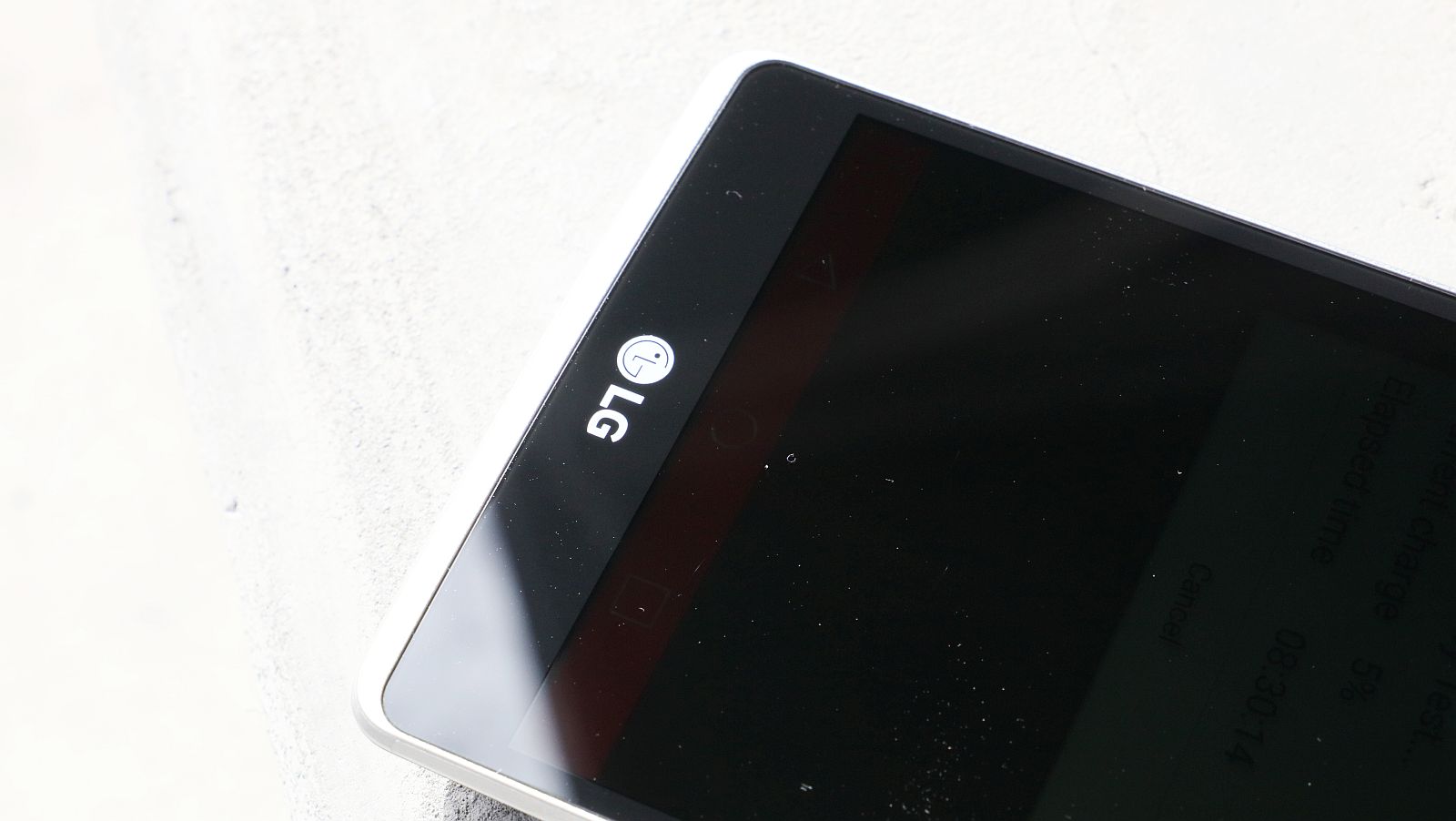HONOR has officially opened pre-orders for its much-anticipated HONOR 400 and HONOR 400 Pro smartphones in South Africa — ushering in a bold new…
LG G4 Stylus review: a gentle giant

If there’s one thing LG hasn’t done this year, it’s launch a mid-range device that I would actually buy. They’ve all been decidedly ordinary, or worst of all, overpriced.
Take the LG G4 Beat for instance. It wasn’t the speediest, most efficient or practical device at the best of times, and it retailed for around R5000 when it was launched. While it was better than the LG G3 Beat, I’ll give it that, it didn’t exactly beat anything in is price range.
That’s not something we can say from the company’s real big surprise of 2015.

And yes, I meant that big in a literal sense too.
The LG G4 was an obvious launch. We all knew that it had to be better than the LG G3, but who would’ve predicted that the company’s new mid-range phablet would sport a stylus?
Not I said the terrible smartphone reviewer. The LG G4 Stylus obviously bears all in its title and looks a great deal like its namesake in the process, but the phone is so much more than that retractable stick in its forehead: compared to LG’s other mid-devices, it’s actual value for money.
Unboxing
Perhaps thanks to its name, I was particularly excited to disrobe the Stylus and see just what LG bundled alongside it. Its box is typical LG of late, with bold but simple colour contrasts and plenty of support for the device as well. In this case, it’s deep red and white.

Cracking open the box reveals a bundled 1.2A charger, a decent LG microUSB cable and a set of fairly meh earphones. It’s the standard fare, but it’s made sweeter by the phone’s general good looks.
But the most impressive feature in the box is the additional battery. Not one, but two 3000mAh batteries arrive with this phone; a genuinely sweet deal for anyone who doesn’t have a four-hour work day.
Design and aesthetic
And did I say “general good looks” earlier? That’s an understatement.
It might not be iPhone 6S classically pretty, but it can wear a top hat and a suit with swagger to boot. With a huge 5.7-inch screen taking up more space on the device’s face than the LG G4, a circumference of metal binding girdling its innards, and an expensive-looking plastic rear. It has a metallic look, but is rather a clever textured silver plastic. The LG G4 also boasts some of these covers, but it looks more refined on the Stylus.
That’s right, you get two 3000mAh batteries with this phone
Adopting the LG G4’s dress sense then but perhaps adopting the better fitting tweed jacket, the same design language continues to the large camera sensor propped up by three buttons, including the volume rockers on either side of the power hump.

It’s not exactly a thick phone, but in typical LG fashion it’s not paper thin either. At 9.6mm deep, it’s a little pocket stretcher, but it still won’t do much harm to those skinnies, not at least like the Huawei Mate 7. That’s thanks to the subtle curve of the phone’s rear.
The microUSB port sits at the bottom of the phone, and unlike the LG G4, the audio-out jack is up top, where it bloody well should be.
The battery’s also removable and replaceable, so that faux metallic cover at the rear can pop off with a fair degree of ease, and a taut, prying fingernail. And generally, this is where a few build quality issues rear their pointy heads.
The metallic rims around the edge of phones in general have been smooth and welcoming to the touch, but there are some curious unsmoothed points on the LG G4 Stylus’s corners. They’re peculiarly prickly too, which caught by thumb off guard the first time it grabbed hold of the device.

And of course, it’s most defining features — its stylus — is located at the top left of the device, but it’s easy to miss if you aren’t explicitly looking for it.
Specifications
We’ll get onto the stylus in depth a little later, but beneath the classy exterior is where the real interesting design decisions lurk.
LG didn’t intend to launch the device as its new flagship back in May, nor was it planning the phone as a phablet sub-category to the LG G4 — or the Note 5 to its Galaxy S6, if you will. So, in terms of raw performance, the LG G4 Stylus is not a powerboat. In fact, it’s barely a rubber dingy.
Key numbers:
Dimensions: 154.3mm x 79.2mm x 9.6mm
Weight: 163g
SIM Type: Micro SIM
Display: 5.7-inch, 1280×720, 257ppi
Chipset: Qualcomm Snapdragon 410 octa-core | quad-core Cortex A53 1.2GHz | Adreno 306 GPU | 1GB RAM
Storage: 4GB (Around 2GB usable), microSD card expansion
Imaging: Rear: 8MP with laser autofocus, LED flash | Front: 5MP
Video: 1080p at 30fps
Battery: 3000mAh removable (two batteries included in the packaging)
Android: 5.0.2 Lollipop
That 5.7-inch screen also runs at a rather low 1280×720 resolution, with the Qualcomm Snapdragon 410 employed to push these pixels around. There’s also 1GB of RAM and just 8GB of internal storage present, which is a real shame. Luckily, there’s a microSD expansion slot.
The cost-cutting measures extend to the cameras as well, with an 8MP rear snapper and a 5MP selfie camera employed — likely the same units used by the LG G4 Beat.

Performance
Luckily, thanks to the lack of pixels, and the relatively low speed processor, it doesn’t take much to power this phone.
Although you’ll get by with some mild multitasking, LG really had to cut corners to get it within budget, and one of those corners hinged on the computational strength of the phone.
It’s not a horrible camera., it’s just not LG at its best
We know consumers aren’t looking for rocket ships, or at least don’t require them, but the LG G4 Stylus is one of the slowest phones for its size that we’ve tested this year.

Benchmark results:
AnTuTu 5.7.1: 21 494
Geekbench 3 Performance: (Single core) 442 (Multi core) 1345
Geekbench 3 Battery: (Total time) 9h02:40 (Score) 3617
GFXBench OpenGL 3.1: (Manhattan) 244.6 frames, 3.9 per second; (T-Rex) 540.9 frames, 9.7 per second
Thankfully, this tardiness isn’t felt when handling the mundanities of Android, but when gaming or watching a high-resolution video, the Stylus grunted and groaned more than what I was comfortable with. Perhaps this is largely thanks to the lack of RAM — 1GB really is on the brink of what is acceptable for Android Lollipop — but the 410 isn’t the brightest chip on the market either.

Lg G4 Stylus Sample Snaps 007

Lg G4 Stylus Sample Snaps 008

Lg G4 Stylus Sample Snaps 009

Lg G4 Stylus Sample Snaps 010

Lg G4 Stylus Sample Snaps 011

Lg G4 Stylus Sample Snaps 012

Lg G4 Stylus Sample Snaps 001

Lg G4 Stylus Sample Snaps 002

Lg G4 Stylus Sample Snaps 003

Lg G4 Stylus Sample Snaps 004

Lg G4 Stylus Sample Snaps 005

Lg G4 Stylus Sample Snaps 006

Lg G4 Stylus Review 8

Lg G4 Stylus Review 1

Lg G4 Stylus Review 2

Lg G4 Stylus Review 3

Lg G4 Stylus Review 4

Lg G4 Stylus Review 5

Lg G4 Stylus Review 6

Lg G4 Stylus Review 7

Considering that the phone does seem to be a multitasking fiend with its large screen and stylus, it’s generally a lower-mid-range handset in a larger body.
In terms of camera performance, it’s not as precise as the LG G4 Beat either, and it feels like LG’s simply using its laser focus technology as marketing bait. It doesn’t really give the camera any superpowers, but I’m being overly harsh here. It’s not a horrible camera., it’s just not LG at its best.
Battery performance is on another level altogether though, and if you’re looking for a device to last the entire day and then some, the LG G4 Stylus is a pristine example.

It took the best part of the night to run GeekBench’s battery stress test, with the phone pushing beyond the nine hour mark. That’s incredible for a phone in this price range and size. And that’s only the one battery.
Practicality
If you happen to share an affinity with larger screened phones, this is the cheapest 5.7-inch device you can probably get in South Africa right now. It isn’t exactly a Samsung Galaxy Note 5 rival, but it was never intended to be. Thanks to its size, it’s perhaps more suited to hand bags than pockets, but at least you can happily tote it to a gala event or the local swap-meet without much of an issue.
But let’s talk about the giraffe in the room: that pokey stylus
But let’s talk about the giraffe in the room: that pokey stylus.
It’s one thing naming your device after the feature that sets it apart from the rest, but when that feature doesn’t really add much to the overall experience, it’s questionable. I have no problem with the stylus, don’t get me wrong. It’s wonderful for those who note often, or who are just plain sick of carrying paper around with them. It’s also perfect for fingerprint and stain-hating users who enjoy using a smooth, untainted screen. But it doesn’t define the device enough to feature as prominently as it does in its name.

The stylus feels like an optional and additional interaction tool rather than an integral part of the phone’s OS or navigation — like the Samsung Galaxy Note 5. I wouldn’t be too upset if LG sold the device without it, because what the user does get is more than enough.
Value for money
But don’t get me wrong — this doesn’t make the LG G4 Stylus a bad phone.
Is the LG G4 Stylus as a whole worth it though? Yes, if you’re looking at the LG G4 Beat as well, or any other mid-range contender in its price range. It might be slower, but there’s a lot of screen real estate to play around with, and if you’re lucky enough, you could probably find an actual use for that stylus. It makes for an oddball, and extremely niche device. There aren’t many genuine stylus-wielding rivals to speak of, but that’s the beauty of it.
Main competition:
Samsung Galaxy Note 5: R11 999
Samsung Galaxy Note 3: R6599
LG G4 Beat: R4299
Huawei G7: R4168
LG G4 Stylus: R3699
In terms of its price as well, I’d say R3500 for a phone this size is great value for money. It’s cheaper than its poser of a little brother, and that already means that it’s a better deal overall.

But is it the best mid-range phone in the world right now? Nope, it’s not even close.
I’ll doff my cap to LG for trying something new and, for once, considering exactly what the consumer really wants in a mid-range handset: plenty of screen room to breathe and a two-day battery life.
Verdict: I’ll give LG a marketing round of applause because drawing attention away from the phone’s lack of performance by calling it the “G4 Stylus” was a brilliant move. For just under R4000, users get a lot of phone, but there are much faster devices in this price range. And the real question perhaps is this: are styluses really needed in today’s smartphone market? Only the Galaxy Note range can get away with it, it seems, but credit where it’s due: this is probably LG’s best, most value-for-money mid-range effort we’ve seen in a very long time.
Score: 7.5/10






















